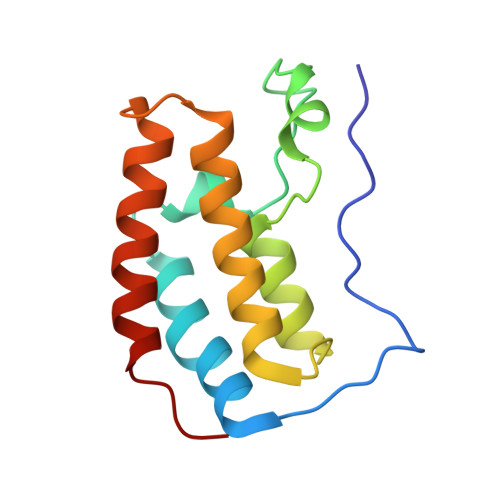Fragment-Based Discovery of Bromodomain Inhibitors Part 1: Inhibitor Binding Modes and Implications for Lead Discovery.
Chung, C.W., Dean, A.W., Woolven, J.M., Bamborough, P.(2012) J Med Chem 55: 576
- PubMed: 22136404
- DOI: https://doi.org/10.1021/jm201320w
- Primary Citation of Related Structures:
4A9E, 4A9F, 4A9H, 4A9I, 4A9J, 4A9K, 4A9L - PubMed Abstract:
Bromodomain-containing proteins are key epigenetic regulators of gene transcription and readers of the histone code. However, the therapeutic benefits of modulating this target class are largely unexplored due to the lack of suitable chemical probes. This article describes the generation of lead molecules for the BET bromodomains through screening a fragment set chosen using structural insights and computational approaches. Analysis of 40 BRD2/fragment X-ray complexes highlights both shared and disparate interaction features that may be exploited for affinity and selectivity. Six representative crystal structures are then exemplified in detail. Two of the fragments are completely new bromodomain chemotypes, and three have never before been crystallized in a bromodomain, so our results significantly extend the limited public knowledge-base of crystallographic small molecule/bromodomain interactions. Certain fragments (including paracetamol) bind in a consistent mode to different bromodomains such as CREBBP, suggesting their potential to act as generic bromodomain templates. An important implication is that the bromodomains are not only a phylogenetic family but also a system in which chemical and structural knowledge of one bromodomain gives insights transferrable to others.
Organizational Affiliation:
Computational & Structural Chemistry, Molecular Discovery Research, GlaxoSmithKline R&D, Medicines Research Centre, Gunnels Wood Road, Stevenage, Hertfordshire SG1 2NY, UK. Chun-wa.chung@gsk.com

















